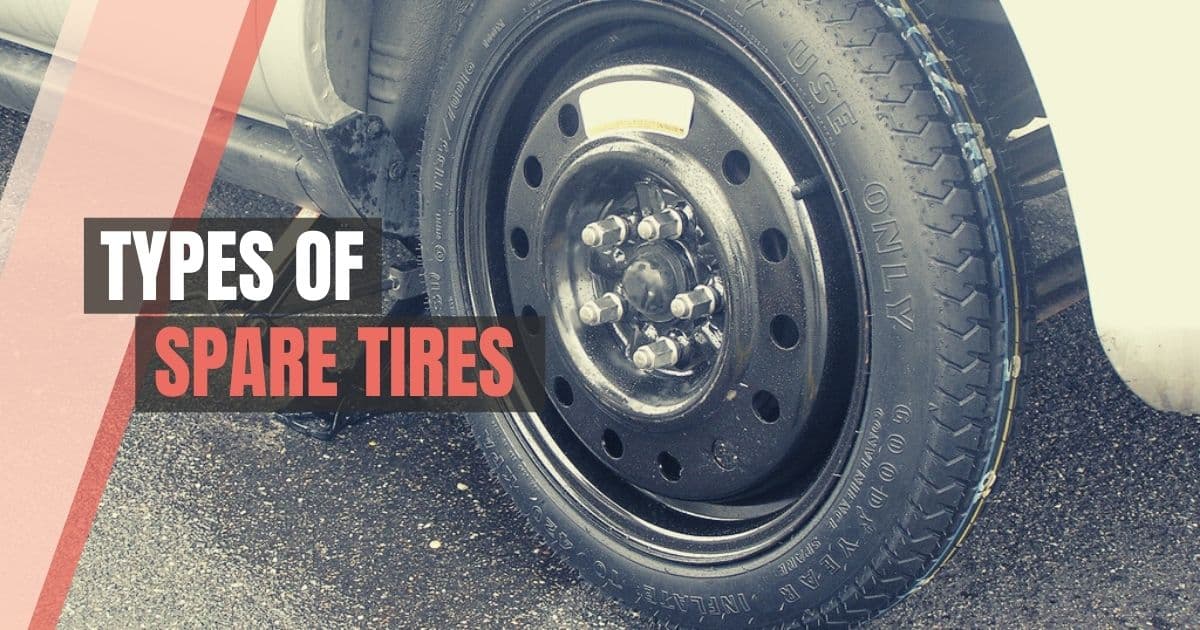We don’t normally think about the quality of our tire unless our mileage is very high; this can lead to legal and safety issues if the tire is not road worthy. Unfortunately, new vehicles don’t always come with a spare tire, even if they have a space for one in the trunk or underneath the vehicle.
So what should you look for when buying a secondary tire? First of all, you will have to decide on what type of space you need. Do you require a full-size matching tire, a full-size temporary tire, a space saver, or something else? And how much do you want to pay? Budget or premium.
Full-Size Matching Spare
Many people like to have a full-size matching spare in their vehicle; this allows you to replace the tire in the event of disablement seamlessly. In addition, a full-size matching spare maintains the specification of your vehicle and means that you don’t have to replace the spare right away.
However, a full-size matching tire has a major downside; they are difficult to store. Space-saving tires, like compact tires, can fit underneath the floor of the truck or on the chassis, but a full-size matching spare might need to be secured to the outside of the vehicle, altering the aesthetics.
Full-Size Non-Matching Spare
One alternative to a full-size matching spare tire is the full-size non-matching spare. While the full-size non-matching spare is technically a full-size tire, it does not have the same dimensions as a full-size tire. The advantage is space-saving, but it can’t be part of your normal tire rotation.
If you find you’re vehicle doesn’t have enough space for a full-size matching spare, you might want a full-size non-matching spare. This tire type gives you the same stability on the road and maintains the continuity of your vehicle, but you will have to replace it soon with a full-size one.
Full-Size Temporary Spare
Sometimes you need a spare tire that is easy to replace and gets you to where you need to go quickly and without fuss. This is where a full-size temporary spare can be useful. The full-size temporary spare is made from a lightweight construction, and the tread depth is more shallow.
A full-size temporary spare doesn’t interfere with your vehicle’s ABS, traction control, or all-wheel drive. Additionally, the lightweight construction doesn’t add any extra weight to your vehicle. However, a full-size temporary spare takes up the same room as a matching tire.
Compact Temporary Spare
If you’re not worried about how your vehicle looks after a tire incident, you might prefer a temporary compact spare. These tires have slightly smaller dimensions than your ordinary tires, meaning they can be stored more easily; they all have a higher inflation pressure.
The purpose of a compact temporary tire is to help you get to a repair shop quickly; it also provides you with an effective breakdown solution without taking up excess space in your vehicle. The downside is, these spare might affect ABS and traction control.
Folding Temporary Spare
Folding temporary spare are becoming more and more common in newer vehicles; they are excellent for saving space and give you all the functionality of a standard space-saving spare. A temporary folding spare has smaller dimensions than a matching tire and needs to be inflated.
The advantage of a temporary folding spare is space-saving. In addition, this style of spare tire fits neatly into the trunk under the floor; they are often integrated with a toolset or a subwoofer. The downside of this tire is it needs inflating with an air pump or canister before it can be used.
How Do You Choose a Spare Tire
If you need to replace or perhaps purchase a spare, then there are few things you should look for. Just like a regular tire, a spare tire will need to match the bolt pattern, meet the size requirements, and the load index requirements. It’s easiest to look for spares that are for your vehcile make and model. Typically they will cover a range of years. For example “Spare Tire Kit – Fits 2016-2022 BMW X1”. While you are loking for a spare you should also consider a jack and lug wrench to go with it.
How to Drive on a Spare Tire
Once you replace your spare tire, it’s time to head to the repair shop – that’s unless you’ve swapped it for a full-size matching tire. Before you drive on your space, check the condition of the tire, make sure it’s properly inflated, and that the sidewall is not damaged or worn.
Driving on a spare tire is not the same as driving on your normal full-size tires. Depending on the tire type, you might notice changes to your speed and braking system. The best advice is to drive moderately to the nearest repair shop. Remember, spare tires are temporary solutions.
Is It Ok to Buy a Used Spare Tire?
It can be ok to buy a used spare tire as long as it is less then six years old, has tread life still on it and meets safety standards. A spare tire should be evaluated just like you would a regular tire: check for dry rot, chords poking out, any repairs, etc. Getting a used spare tire is a good way to save money, but just remember this is a piece of equipment you need to rely on in an emergency!
Spare Tire – Final Thoughts
If you’re operating a vehicle, you need to have a spare tire in the trunk or fitted underneath the chassis. Most modern cars have one fitted as standard, but it’s a good idea to check just in case. It’s also a good idea to learn how to replace the tire on the roadside, so it’s safe to use.
Additionally you should occasionally check on the health of your spare. Many times they got forgotten about for years and they begin to dry rot. Then it’s not safe when you need it.
